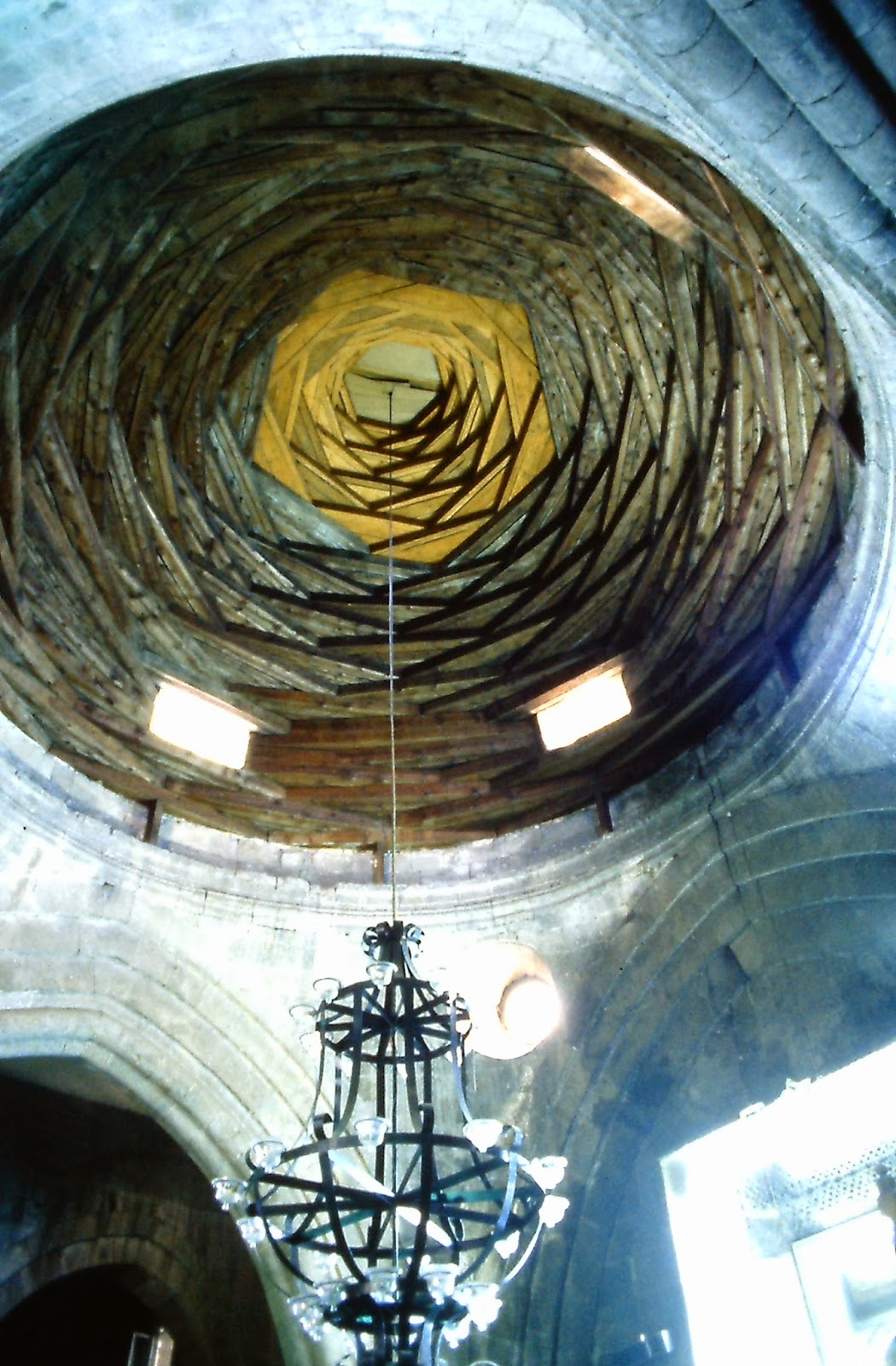Ankara, the capital of Turkey, is about a four-hour drive from Ürgüp in Cappadocia, through countryside reminiscent of Kansas - farmland full of olive trees, wheat, lots of wildflowers (we were there in July), peanuts, poplars and vineyards. The Museum of Anatolian Civilizations (housed in a beautiful 15th century fortress and caravansarai) and the Ethnographic Museum are small, but excellent; they didn't allow interior photography when I was there, so I haven't any photos to share.
We visited Mustafa Kemal Atatürk's tomb, which is quite grand, befitting the man who founded the Republic of Turkey. He was an officer in the Ottoman Army in World War I, and as the first President of Turkey, is credited with building thousands of schools and making primary education compulsory, and giving women equal civil and political rights. As to the tomb, it is, I have to say, quite reminiscent of Peron's in Argentina.
According to Wikipedia, this statue group of three women in Turkish national costumes, with the two women at the sides holding a large wreath, made of grain sheafs representing the abundant country, reaching to the ground. The woman on the left with a cup in her stretched-out hand is asking for God's compassion for Atatürk, and the woman in the middle, covering her face with her hand, is crying. This group represents the pride of Turkish women, and their solemnity and determination even in the deepest grief of losing Atatürk.
In this group of men, the man at the right with a helmet and coat represents a Turkish soldier;
on the left with a book in his hand is a Turkish youth and
intellectual; and behind both of these, in village clothing, is a Turkish
peasant:We visited Mustafa Kemal Atatürk's tomb, which is quite grand, befitting the man who founded the Republic of Turkey. He was an officer in the Ottoman Army in World War I, and as the first President of Turkey, is credited with building thousands of schools and making primary education compulsory, and giving women equal civil and political rights. As to the tomb, it is, I have to say, quite reminiscent of Peron's in Argentina.
According to Wikipedia, this statue group of three women in Turkish national costumes, with the two women at the sides holding a large wreath, made of grain sheafs representing the abundant country, reaching to the ground. The woman on the left with a cup in her stretched-out hand is asking for God's compassion for Atatürk, and the woman in the middle, covering her face with her hand, is crying. This group represents the pride of Turkish women, and their solemnity and determination even in the deepest grief of losing Atatürk.
The interior of the mausoleum pavilion has some very nice detailing, with mosaic and painted ceilings:
The next morning, we flew to Trabzon (Trebizond), where I have to admit I did not see any of Rose Macauley's towers, on the Black Sea. We drove along the rugged beautiful coastline with its rocky beaches to Rize, the provincial capital.
One of the mosques in town:
For reasons that evaded me even then, we drove to the Russian border from Rize, where the main attraction seems to be black market sales from car trunks...
In this area, tea growing and processing has been the main economic engine since the 1940s; many slopes are terraced and planted intensively with tea camellias:
On our way to the city of Erzurum, we drove through some beautiful countryside carpeted with wildflowers:
We picnicked along the Choruk River, which is now a big destination for white-water rafting:
We stopped to admire the Çobandere Bridge near Kars, built in 1298. This is the Roman bridge referred to by Virgil in the last chapter of the Aeneid; in it, the Aras River is described as being angry at the bridge because, by being built over it, the bridge conquered the river.
The provincial capital Erzurum, just under 400,000 population, is the highest city in Turkey at 5766 feet, and was NATO's southeastern-most air force post during the Cold War. Popular for winter sports, it's also known for a couple of its oldest structures, one of which is the 14th century Yakutiye Medrese. Strangely, I seem to have no photos of its exterior, which is sad because it has the most gorgeous single minaret, so I encourage you to take a look at the exterior at this site: Yakutiye Medresesi
Look at the construction of this dome, with overlapping planks being offset:
The other site Erzurum is noted for is the Double Minaret Mosque. My photos are pretty poor, too:
Details of the Mosque:

























No comments:
Post a Comment